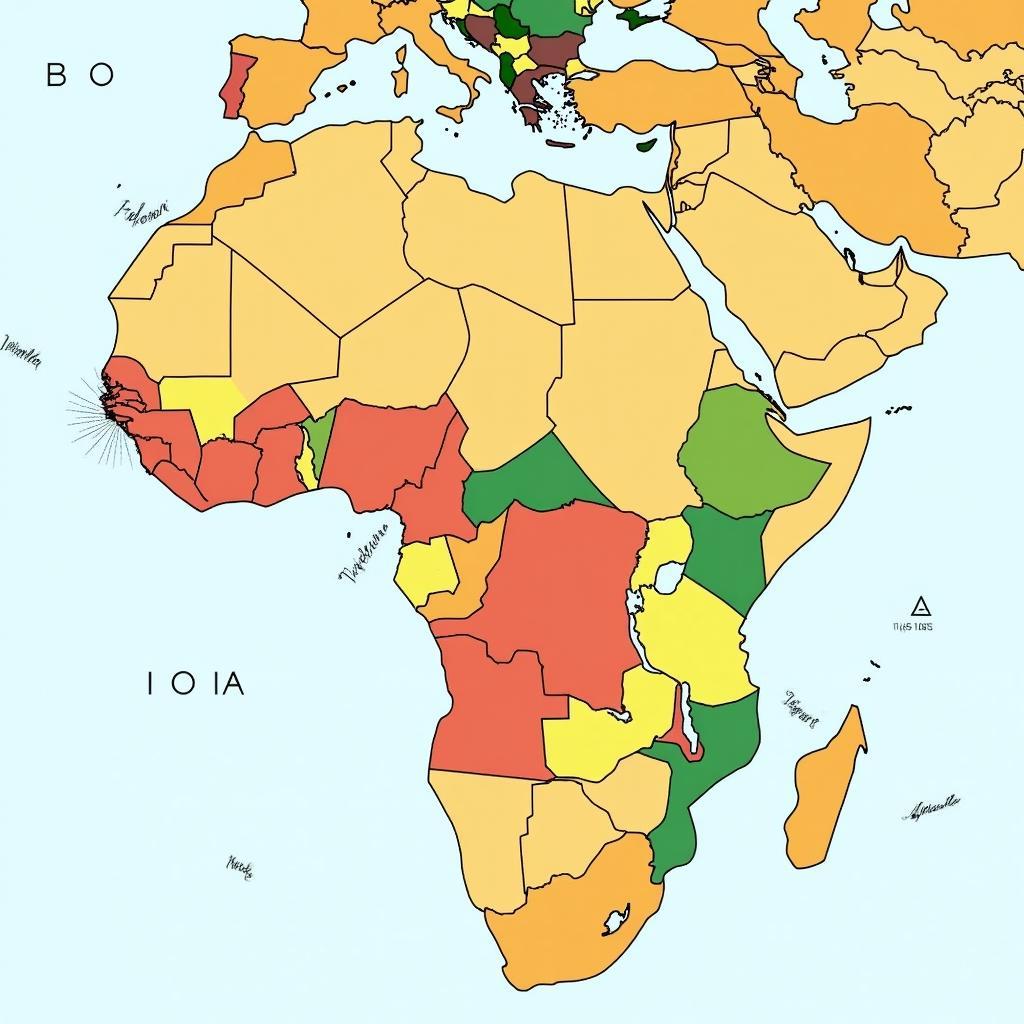Exploring the Concept of “African Dirty Food Material”
The phrase “African Dirty Food Material” might seem puzzling or even offensive at first glance. It’s important to understand that this term doesn’t refer to food that’s unsanitary or unsafe. Instead, it often reflects a cultural misunderstanding and a lack of familiarity with the diverse culinary traditions found across the African continent.
Decoding “Dirty Food”: A Cultural Perspective
In some Western contexts, “dirty food” has gained popularity as a slang term for street food or dishes that are considered messy or indulgent. However, applying this term to African cuisine can be problematic. It often stems from a Eurocentric perspective that views certain African food practices as “exotic” or “primitive,” failing to recognize the rich history, complex flavors, and cultural significance behind these dishes.
Common Misconceptions and Their Origins
One common misconception is that “African dirty food material” refers to ingredients that are unwashed or prepared in unsanitary conditions. This is simply not true. Like any other cuisine, African food preparation emphasizes hygiene and food safety. The use of certain ingredients, such as fermented foods or offal, might be unfamiliar to some, but these ingredients are carefully handled and play an important role in both flavor and nutrition.
Another misconception arises from the visual presentation of some African dishes. Stews, for instance, are often thick and hearty, with ingredients simmered together to create a rich, flavorful sauce. This can be perceived as “messy” or “unappetizing” to those accustomed to more minimalist plating styles. However, this perception overlooks the depth of flavor and the communal aspect of many African meals, where sharing food is an integral part of social interaction.
Celebrating the Diversity of African Cuisine
It’s crucial to move beyond simplistic labels and appreciate the incredible diversity of African cuisine. With 54 countries and countless ethnic groups, the continent boasts a vast array of culinary traditions, each with its unique ingredients, cooking techniques, and cultural significance.
From Morocco to Madagascar: A Culinary Journey
North Africa, for instance, is known for its aromatic tagines, couscous dishes, and the use of spices like cumin, saffron, and cinnamon. West Africa is famous for its flavorful peanut stews, fufu (a starchy side dish made from pounded yams or cassava), and grilled fish or meat. In East Africa, staples include ugali (a maize-based porridge), nyama choma (grilled meat), and a variety of lentil and bean dishes. And Southern Africa is renowned for its braais (barbecues), bunny chow (a hollowed-out loaf of bread filled with curry), and biltong (dried, cured meat).
The Importance of Context and Understanding
Rather than using terms like “dirty food material,” it’s important to engage with African cuisine with an open mind and a willingness to learn. Understanding the cultural context and historical influences behind different dishes can help to break down stereotypes and foster a greater appreciation for the richness and diversity of African food culture.
Embracing the True Flavors of Africa
So, the next time you come across the phrase “African dirty food material,” remember that it’s more likely a reflection of ignorance than reality. Instead, take the opportunity to explore the vibrant world of African cuisine and discover the delicious and diverse flavors that this continent has to offer.
Resources for Further Exploration
- Websites and blogs dedicated to African food and recipes
- Cookbooks by African chefs and food writers
- Documentaries and travel shows that showcase African cuisine
By embracing a more informed and respectful perspective, we can celebrate the true beauty and deliciousness of African cuisine and move beyond harmful stereotypes.



